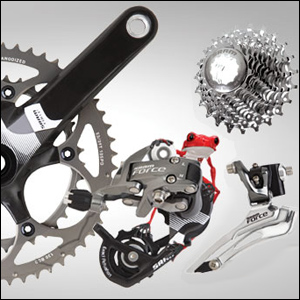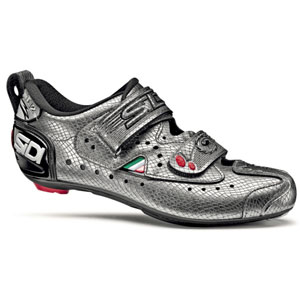Look Keo
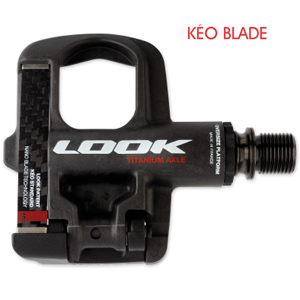
For some several years now I've been riding these pedals in their various iterations. I've ridden the Keo Classic, the Keo Easy, the Keo 2 and the Keo Blade.
Indeed, I've been riding Look pedals for about 25 years. Look was not the first "clipless" pedal. That honor belongs—according to my memory—to Cinelli. This company made a pedal that did not require toe clips and straps, but you still had to reach down and hand-activate the release. You can see these vintage pedals on Speedplay's digital pedal history.
Look's first pedal came along around the same time as a nifty design from New Zealand called Keywin. I was a Keywin devotee for several years. This pedal featured a part of the plastic pedal body that acted as the spring.
Look's pedal debut was almost contemporaneous with Keywin's intro. Anyone who saw the original Look pedal, and who was a snow skier, recognized the genius, and the simplicity, of the design.
A cursory glance at any cycling pedal may lead one to think it's closer in design to the Spademan ski binding (popular in the 1970s) than a conventional toe-and-heel ski binding, such as the "Nevada" class binding made by Look during the last half of the last century. However, while the Spademan was a mid-boot mount—similar to where pedals mount to cycling shoes—the Spademan attached to a plate on the sides of a ski boot. A "plate" or cleat attached to the underside of a cycling shoe acts as a proxy for the entire ski boot, and the pédale automatique, as they say in France, is a miniature toe-and-heel ski binding.
The rest is history. Bernard Hinault won Tours de France on Look's pedals, so did Greg Lemond, and Shimano—a company reluctant to license the inventions of others—took a license from Look for pedal manufacture (that's how functional and comprehensive the design was). The one innovation Look didn't introduce and popularize was pedal "float"—Time gets the credit for that.
Look is now Look Cycle. Its headquarters, in Nevers, France, are the traditional headquarters of the company since its inception during its ski binding era. But the ski business was sold to Rossignol, and only cycling remains at Look's headquarters in Nevers.
There are three pedal brands/motifs that matter to triathletes most. These pedal styles account for 90 percent of what Slowtwitchers would buy if they were to start afresh and buy pedals and cleats new today. They are Shimano's SPD-SL (still reminiscent of Look's original and subsequent designs); Speedplay's Zero; and the Look Keo. The latter is chosen by our readers at a rate of 36 percent, to 32 percent for Speedplays and 22 percent for Shimano.
Look offers two spring technologies in its Keo: the traditional double-spring retention system versus its blade spring. In this latter iteration a carbon blade sits under compression in the pedal, replacing the spring, decreasing the weight and, says Look, creating a "more secure and positive cleat entry/release." The blade spring is evident in the image above, on the outside of the pedal, on the underside.
Ironically, using a plastic, or composite, structure to act as a spring that controls retention and release hearkens back to the Keywin pedal. But one should not make too much of the coincidence.
The Keos themselves are great pedals, I've got thousands of miles in several Keo models. They release when they should; and don't release when they shouldn't. If you want to make sure my same good luck flows to you, give some thought to the cleats you mount on your shoes (more on that below).
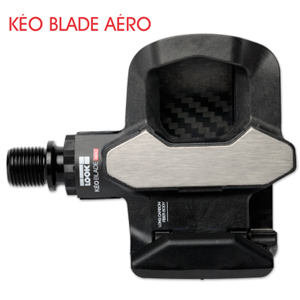
Look's Keo Blade series features several updates over the Keo Classic and Keo 2 models. First, it's light. Either just above, or significantly below, the 200g threshold, depending on the exact model.
Second, the contact area between pedal and cleat increases. The stainless steel face you see on the top side of the pedal speaks to that.
Third, the axle diameter is larger. This is the thing in bikes: increase the width of the axle, whether it's the bottom bracket axle, or the "axle" that a fork steerer becomes once you slap it into a frame supported by headset bearings. The larger pedal axle diameter—from 10mm to 12mm—does not increase the distance of the shoe above the axle, but does increase strength and decrease weight.
The axle strength is important, because increasing the Q-factor (for those who need it) is actuated by the placement of one, or two, 1mm washers that extend the distance of the pedal outbound from the bike's centerline. Who needs this? In my experience, those whose knees track to the outside of the pedaling circle in the sagittal place. In common terms: Do your knees stick out to the side at the top of the pedal stroke? Stick a washer in between the pedal and the crank. Do they still stick out? Stick the second washer in there.
Do they still stick out? You may then need a longer pedal axle. This is one good reason to consider Speedplay as an option, because of their variable axle lengths (read more about Speedplay axles lengths). If this isn't a problem you face, then it's moot. (Ward Industries is a maker of aftermarket spindles for popular pedal styles, including some Keo models. These are titanium pedal spindles, I have no idea whether they're safe, or whether Look would countenance using these spindles with their pedals. Do your homework. Forewarned is forearmed. I mention this because it is another way to add Q factor to a Keo pedal.)
As stated, the bigger axle diameter adds to the ability to safely place these spacers on the pedal axle and shim the pedal outboard. However, there's limited ability to do this because the pedal eye (that hole in the crank the pedal screws into) is of a certain, industry standard, size. While bottom brackets have increased in size (both the shell and the bearing diameters); and the steer column got bigger, and the handlebar diameter increased, the pedal has not. Why is that? Anyway…
There are six Look Keo models. Two are the standard Keo pedals, the Easy and the Classic. These can be had for retail prices well down into the two digits (street prices from $70 to $105).
Look Keo 2 Max and Keo 2 Carbon—the next generation of Keo pedal—should run you from the low $100s to the high $100s respectively.
The Blades will come in three iterations: chromo axle, ti axle, and the Aero Blade. Street price for these Blade models will start at around $300 and move upward. The Keo Blade Carbon with titanium spindle is an extremely lightweight pedal—in the 180g range—and will cost in the neighborhood of $500. If that seems like a lot, search out other pedals in that weight range, and see what they cost you. (You'll find out it isn't a lot.)
I've seen attractive prices, in the mid-$300s and lower, on the Keo Blade Aero carbon.
Finally, you should think about the cleats. Do you know what the various cleat colors mean? Did you think that grey, black and red cleats were in production just as a break from the monotony? In fact, they're descriptors and determiners of degrees of float. A black cleat means no float. A grey cleat means 4.5° of float, and red cleats mean 9° of float.
By "float" I'm talking about side-to-side movement. Personally, because I walk and therefore ride somewhat splay-footed, I mount my cleat on my shoe so that I can rotate my hip outward to the point where my cycling shoe's heel just grazes the crankarm—that's where the float stops. Let's say you choose to mount your cleats likewise. After having done this, when you rotate your hip inward, riding pigeon-toed, are you able to click out of the pedal? If not—and if you're riding with red cleats—perhaps a switch to grey cleats solves your problem.
You can always revert to another method of extracting yourself from your pedal: rotate your heel inward. This is how I get out of my pedal, because I have extremely limited inward hip rotation. But this is not ideal, because you have do this with your pedal at top dead center, with your heel rotating inside your frame's main triangle.
I am, personally, a Keo fan. I started the year with three boxes of new Look Keo pedals. I had been afraid of even opening the box of Blade Carbons. These, Look sent to me. They just sat there on my workbench. Like jewelry.
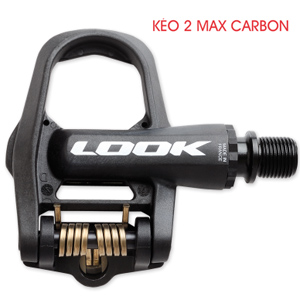
As many of you know, Swedish uberbiker and pro triathlete Bjorn Andersson stays here, at the compound, for several months each Spring. We were both in my workshop on morning, and I noted he was riding Keos. "Hey, how do you like your new Carbon Blades," I asked.
"I don't have any," he replied.
"You mean, they didn't send you a set?"
"I don't have a pedal deal. I buy my pedals. I buy another set or two every year. I just always buy Look Keos. I'm trying to decide if I can justify the cost of the Blade Carbons."
Well, you can imagine what happened. And, no, before you wiseacres on our reader forum start in, I didn't sell the Keos to him!
The moral of the story, I guess, is that every now and then you get a chance to see what pros really choose, when there are no payments, no sponsors, no bonuses, and they have to lay their money down on the cash register just like you and I. Certainly other pedal companies have their devotees, even among the pros. Nonetheless, I thought you might find the Bjorn story illustrative.
There is one further pedal product that Look makes in the Keo family. It's a power meter, in partnership with Polar. I'm treating that as a power meter, and will include it in the reviews of power meters.
You can read more about There are six Look Keo pedals on Look USA's website.


